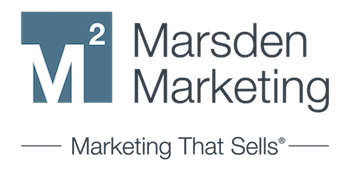 One of the most common gripes sales departments bring against marketers is that the leads they are providing them are no good. In the past, we’ve gone to bat for our brethren in marketing. But sometimes, sales is right: your leads really are crap.
One of the most common gripes sales departments bring against marketers is that the leads they are providing them are no good. In the past, we’ve gone to bat for our brethren in marketing. But sometimes, sales is right: your leads really are crap.
Here are two ways to know for sure if the leads you are sending over to sales aren’t worth the time of day.
1) Your leads are not in your target market.
The most common reason why your leads are not bringing in the sales boost you are expecting is that they are not really in your target market. They are probably useless leads that only serve to add volume to your leads list and give you false hope. What are the typical culprits? The most common ones are people who are either not in your target market or aren’t potential buyers at all. Consider all the people who found your great content (thanks to good SEO and social media distribution), and downloaded an asset or signed up for your blog…BUT they live in a geographic area your company doesn’t serve. Take the time to evaluate all the characteristics that can EXCLUDE possible leads - like geographic location, job title, and company/department budget, and all the other factors that make up your ideal buyer personas. Then figure how to identify and screen them out before sending on to sales. This is rarely a once and done process. You won’t know a visitor’s budget right out of the gate, but you can build progressive forms that over time might tell you. And you can evaluate your website messaging to really speak to your target buyers, and weed out the ones who aren’t a fit.
This will especially come into play if you are using marketing automation software. If your lead scoring process does not accurately match that target persona, your marketing funnel won’t be able to automatically filter out those bad leads. For example, if a visitor views an “About Us” page, followed by the “Careers” page, that visitor should be allocated a negative score, as they are likely a prospective job candidate and not a prospect. Conversely, if a visitor views the “About Us” page, followed by the “Pricing” page, that would be a good indicator of a potential buyer.
This will help to make sure that your marketing automation is doing its job and accurately “grading” visitors. Lead scoring is a constantly evolving process, but the better you get at it (with the help of good feedback from sales), the more quality leads you’ll be sending to sales.
2) There is a mismatch in expectations of the products and services you provide.
If you find that many leads are looking for solutions that you do not provide, there may be a mismatch in expectations given by your website. Your website or marketing messages should accurately represent your business and what you have to offer. An example of this would be if your site makes reference to a specific service that you no longer provide, or perhaps does not fully describe your company’s positioning. A good example we had recently was a client whose site promoted a range of professional services that the company had discontinued. Interested “prospects” were being sent to sales, only to be told that the services were no longer available.
Your website needs to clearly convey the solutions that your company provides. Clearing out these bad leads will save both the prospects’ and your sales professionals’ time.
Improving the quality of the leads sent to sales:
The goal of inbound marketing is to get as many sales ready leads as possible in and through the marketing funnel, and to nurture those leads that aren’t yet ready as they make the journey. Marketing attracts and nurtures leads from the top, to middle, to bottom of the sales journey. During this process, leads that reach a certain stage become “Marketing Qualified Leads” (MQL). These leads are typically then passed through an initial sales qualification process where they are tested for budget, authority, need, and timing (BANT). Only those who are determined to be ready for sales are moved on to the next phase. These leads are considered to be sales qualified leads (SQL). In order for this process to work, there needs to be a clear understanding between the two departments of what qualifies as an MQL and an SQL. The best practice to ensure a good hand off between marketing and sales is to create an interdepartmental service level agreement (SLA).
What is an SLA?
This is one of the definitive processes for creating harmony between sales and marketing. In fact, we recently wrote an entire blog on the subject. To paraphrase, this agreement outlines a specific number of “quality” leads marketing commits to generating (quality to be pre-determined by specific criteria or prospect behaviors) and a specific follow-up protocol that sales agrees to adhere to close the loop on the disposition of leads. Having such an agreement provides accountability for both organizations and focuses them on jointly creating communications programs to drive mutual success.
Should we throw out the crappy leads?
Hold on. Maybe some of those crappy leads are only crappy right now. Before tossing them out entirely, consider adding them to a drip campaign, specifically if they fit the criteria of being mostly qualified, but not quite being ready to buy just yet. Having a quality lead nurturing process can help you build credibility and awareness with prospects in those early stages when they aren’t ready to talk to sales. Remember, IDG found that the average B2B buyer downloads up to 9 content assets before talking to sales…and they BUY from the company that supplied 50% of the information.
Leads may be crappy for a number of reasons, but there are solutions and processes to help you filter, refine and nurture, so that the good ones get to sales at the right time. A little more analysis, decent tools, a dose of patience, and a lot closer communications between marketing and sales is a good formula to turn “crap” into gold.
What goes into a best-in-class lead generation engine? Find out in our eGuide, "The 30 Greatest Lead Generation Tips, Tricks & Ideas."




